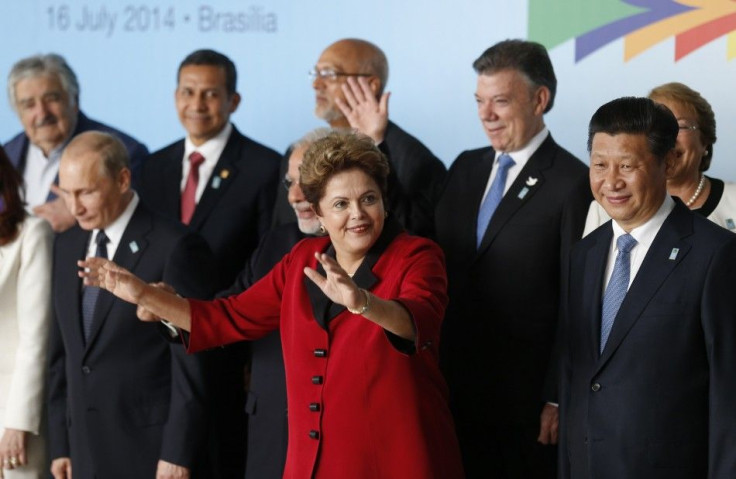US$100B BRICS Fund To Rival IMF Rises, Russia Pledges $18B

Despite problems hitting its economy, Russia has pledged to contribute US$18 billion to the reserve fund that will create the US$100 billion BRICS fund that will rival the United States’ dominated global banking institution IMF. The BRICS group is composed of Brazil, Russia, India, China and South Africa, described as five leading emerging economies in the world today.
Moscow’s contribution, ratified via an accord on Saturday by President Vladimir Putin, could be the second biggest to be pooled into the fund. China had promised US$41 billion after an agreement calling for the creation of the fund was signed in Brazil in July 2014.
The main goal of the BRICS bank is basically to provide capital infusion money for infrastructure and development projects in BRICS countries alone. Regardless of GDP size, each member nation has a say on the manner of operations and how the amounts will be disbursed. It is expected to be based in China’s Shanghai. The group agreed that India will preside as president on its first year. Russia, meantime, will be the chairman of the representatives.
Reuters reports Russia hopes the new bank will symbolize the growing influence of the BRICS and send an effective signal to the West. It is expected the bank could start lending to the five economies effective 2016. AFP reports the fund is meant to shield the BRICS against "short-term liquidity pressures" as well as promote greater cooperation between the five member emerging countries.
A report by RT News states BRICS economies represent 42 percent of the world’s population and 20 percent of the world’s economy based on GDP. Total trade between the countries is $6.14 trillion, or 17 percent of the world’s total.
To report problems or to leave feedback about this article, email: e.misa@ibtimes.com.au.




















